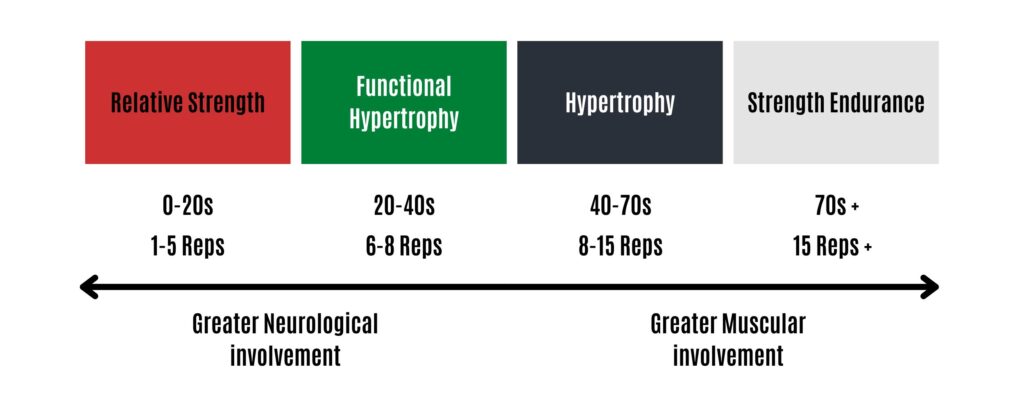How to Manipulate Rep Ranges For Hypertrophy
In the early 2000s, when I was a very young teenager lifting in my fathers shed, my only source of information was from Joe Weiders mail order Body Building System manual and old issues of Muscle and Fitness. Without fail, the workouts of bodybuilding champions would be exercise after exercise of 3 sets of 8-10 reps, or derivatives with very little variation. I was (as I’m sure thousands of others where) led to believe that the holy grail of muscle growth lied in these strict combinations of sets and reps.
Now, however, we are much more educated on how to create hypertrophy. Recent research has pointed to a large range of rep ranges being appropriate for hypertrophy increases, with anecdotal evidence further solidifying the point. Olympic weightlifters tend to training with relatively low reps, whilst one only has to look at the quads of elite track cyclists to see the results of many reps.
Hypertrophy Rep Ranges
Traditionally, repetition ranges of 6-15 have been suggested for hypertrophy development, while lower repetitions of 1-5 are often advised for building maximal strength. Whilst you can certainly grow muscle outside these rep ranges, as a general rule, I would tend to agree with this sentiment, although the art of selecting the optimum rep ranges extends far beyond this simple sentiment.

The table above represents a general outline of the relationship between the rep range used (assuming the set is taken to, or close to failure) and the time under tension (repetitions x tempo), and the physiological response.
Responses from Strength Training can be categorized as either Relative Strength, Functional Hypertrophy, Hypertrophy, or Strength Endurance.
Relative Strength; Training methods that result in strength gains with little to no increases in muscle mass (improves the relative strength of the individual). Physiological advances are mainly through increases in the efficiency of the nervous system.
Functional Hypertrophy; Training methods that result in strength gains with a corresponding increase in muscle mass. Increases
Hypertrophy; Training methods that result in increases in muscle mass (irrespective of strength gains)
Strength Endurance; Increases in the ability to perform repetitions above rep ranges of 15.
Whilst this chart gives coaches a good starting point in selecting the right rep ranges, tailoring it to the trainee can take a little more thought and practice.
Tailoring Rep Ranges
Determining the right reps – and the associated number of sets – goes far beyond simply inserting a number out of a column.
The following is a list of the factors that I teach coaches to take into account when determining the number of reps to use;
- Goal
- Exercise Selection
- Training age
- Muscle Fiber makeup
- Neurological efficiency
- Tempo
- Periodisation model
Whilst discussing all these considerations is far beyond the scope of this article, we will look at the goal and the individual in respect to rep selection.
Training Age
As a trainee advances, their ability to recruit faster twitch muscle fibers increases. As a result, for a given percentage of maximum, the ability to perform repetitions decreases. As an example, a beginner may be able to perform 10 repetitions at 80% of their 1RM, where an advanced trainee may only be able to perform 3. In practice e, this means is that to create the same response, the rep range selected for the more advanced trainee needs to be lower.
As an example, a beginner may use a protocol of 3 x 8 for hypertrophy, where the advanced trainee may use 6 x 4 or 8 x 3.
The more advanced the trainee is, the more this is true.
Goals
When looking at the goal of the trainee, you must take into account the goal of the training session, and even further, the goal of the exercise. Whilst hypertrophy may be the overriding goal, it may be applicable to spend time developing neurological efficiency using low reps, or to give the body time to de-load from high volume hypertrophy style training.
Regardless, the rep range for each should be adjusted to suit the trainee – super advanced lifters may hypertrophy on sets of 5, where that would generally be too little volume for a beginner.
Conclusion
Had I known almost 20 years ago when I started training that muscle growth was more than simply 3 sets of 8-12 reps, who knows, maybe I might have been able to make the Mr Olympia stage. All jokes aside, using relatively higher rep ranges for more beginner clients, and lower ones for more advanced lifters, has enabled me to train national record holders in powerlifting, along with successfully rehabbing acute and chronic injuries

